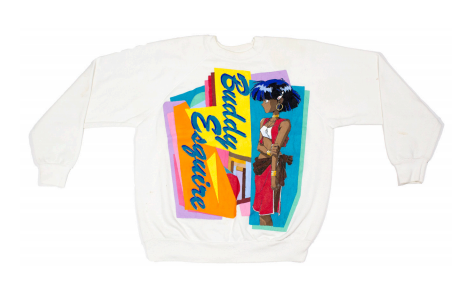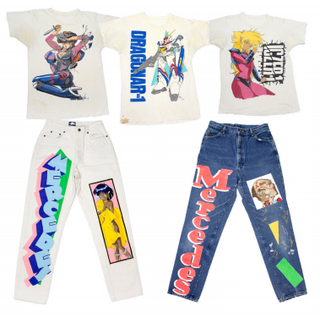Buddy Esquire Anime Hand-Painted Clothing Collection
ca. 1980-1995. Item #4792
This archive is the most substantial known collection of unique hand-painted clothing by Buddy Esquire, the pioneering Bronx hip-hop visual artist. Buddy Esquire (born Lemoin Thompson, 1959 – 2014) was the premier show flyer artist in the Bronx during the earliest days of hip-hop, from 1978 onward. Self-taught, he learned principles of drawing and typography from books at his local library. His influences included graffiti, Japanese anime, superhero comics, and Art Deco architecture. His flyers advertised early performances of hip-hop legends such as Grandmaster Flash, Afrika Bambaataa, Kool Herc, the Funky 4 Plus 1, and the Cold Crush Brothers. Buddy Esquire’s visual styles helped set the tone for hip-hop in the late 1970s and early 1980s. His flyers, beyond their striking graphic elements, are some of the only primary materials relating to the earliest developments of what is now the world’s most popular music genre.
The clothing in this archive was created in the 1980s and 1990s, sometimes as stage wear for hip-hop groups, but usually as customized street wear. Buddy Esquire was at the very vanguard of immersing himself into anime and anime culture. At the time, anime was very hard to find in New York City; its early popularity in the Bronx among comic book fans and graffiti artists remains intriguing and mysterious. Throughout the 1980s and ‘90s, Buddy Esquire would set up shop on Fordham Road selling his wares and taking orders for hand painted t-shirts, sweatshirts, and jeans.
The artwork on the shirts ranges from original flights of fancy creations in the anime style to faithful renditions of popular characters. This work took place decades before anime had become a part of the fabric of mainstream American culture; as per usual, street style led the way years before the mainstream picked up on its original cultural thought.
This collection contains 29 garments, including 21 t-shirts, two pairs of jeans, and six sweatshirts.
Sold


